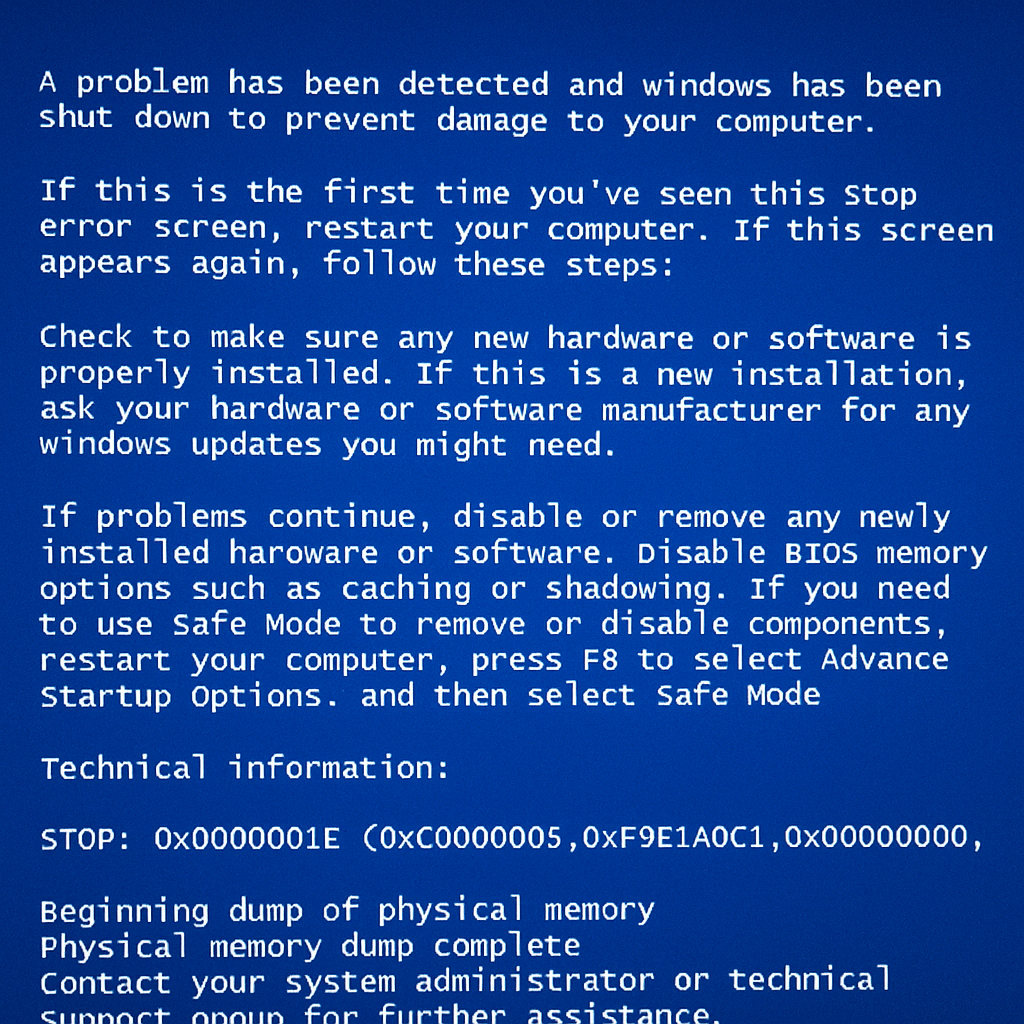Likely, it’s already happened to you or someone you know at least once. It’s known colloquially as the “Blue Screen of Death (BSOD),” and will appear on your screen as a blue page with white lettering. It’s known as that because in the earlier days of personal computers, its appearance often meant the end of your computer. That’s changed a lot in recent years.

The BSOD appears when the computer encounters an issue it can’t solve by itself. It could indicate several different problems, but the most common issues are issues with memory, driver conflicts, or other hardware issues. Fortunately, the blue screen will often tell exactly what the issue is with an error message and a code number.
The error message, whether on Windows 11 or its older sibling Windows 10, will usually mention where the problem was encountered: ‘Windows has encountered a memory failure,” or something to that effect. The message will also be followed by a code, which includes a four-digit hexadecimal* code. That code tells a technician what the problem is and provides the first clue of how to fix it. It’s important to record that number if it appears for diagnosis. Taking a picture of your screen with a smartphone is the best way to do so.
It can be tempting to try to look up the code online and see if you can puzzle it out yourself, But Connecting Point Service Technician Matt Staats says that’s a bad idea. “You can look it up, but you could run into a scam or other problem. We’re trained on this, so we know what’s up. There’s no program or tool you can download to fix this.”
Recent research by Nexthink, an international IT company, indicates that under normal circumstances, the percentage of computer users who might encounter a Blue Screen of Death is 0.5%. However, that number can fluctuate due to outside factors, such as increased threats of cyberattacks on a regional level.
A BSoD is still a concern, and the best course of action is to get your system to a trained technician. However, these days, the Blue Screen of Death is often just a Blue Screen of Inconvenience.
*Hexadecimal numbers consist of a single numeral that designates a number between 0 and 15, with A representing 10 and F representing 15. “10” in hexadecimal is 16. Thank you for attending today’s Math 201 class.
